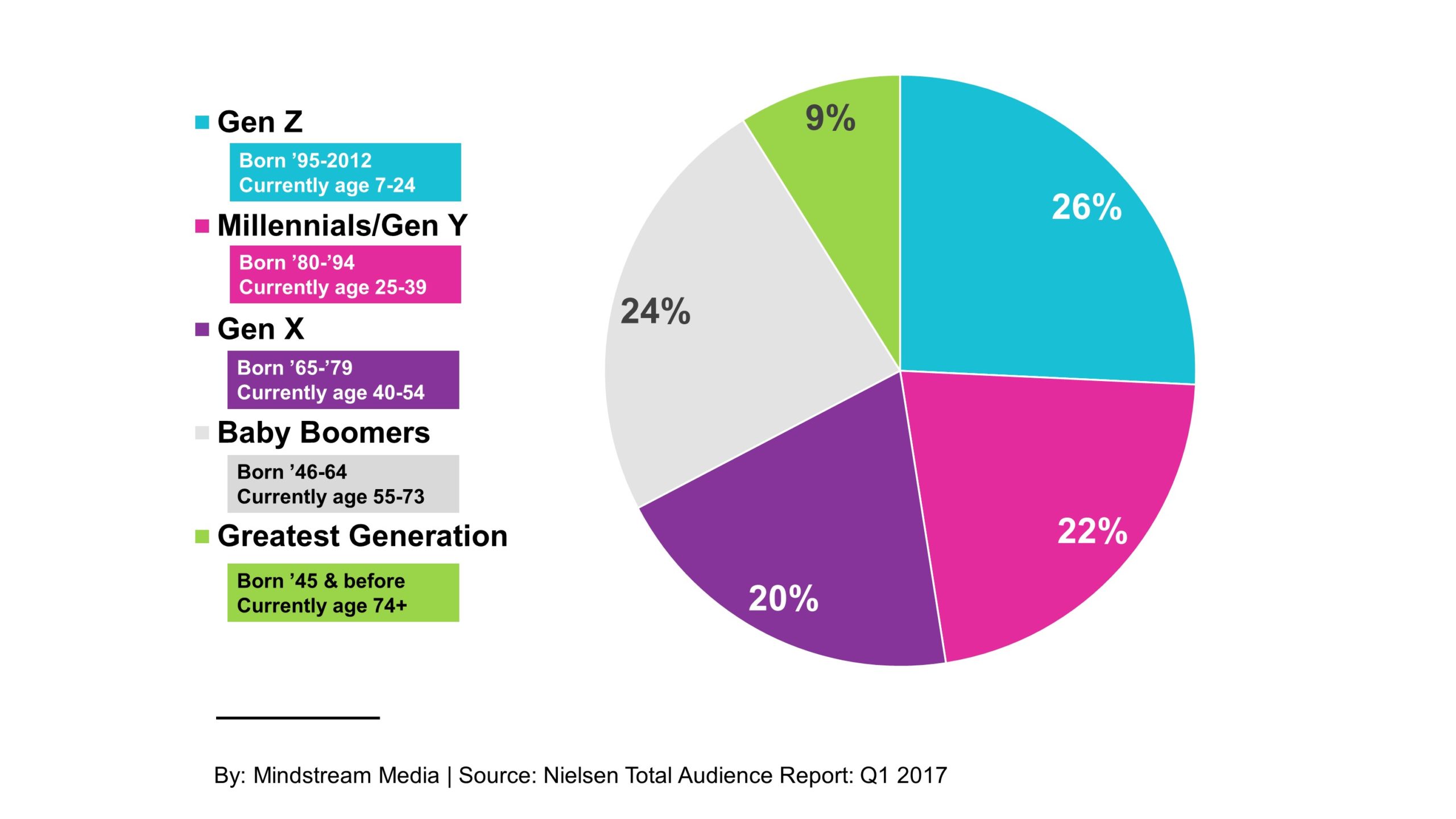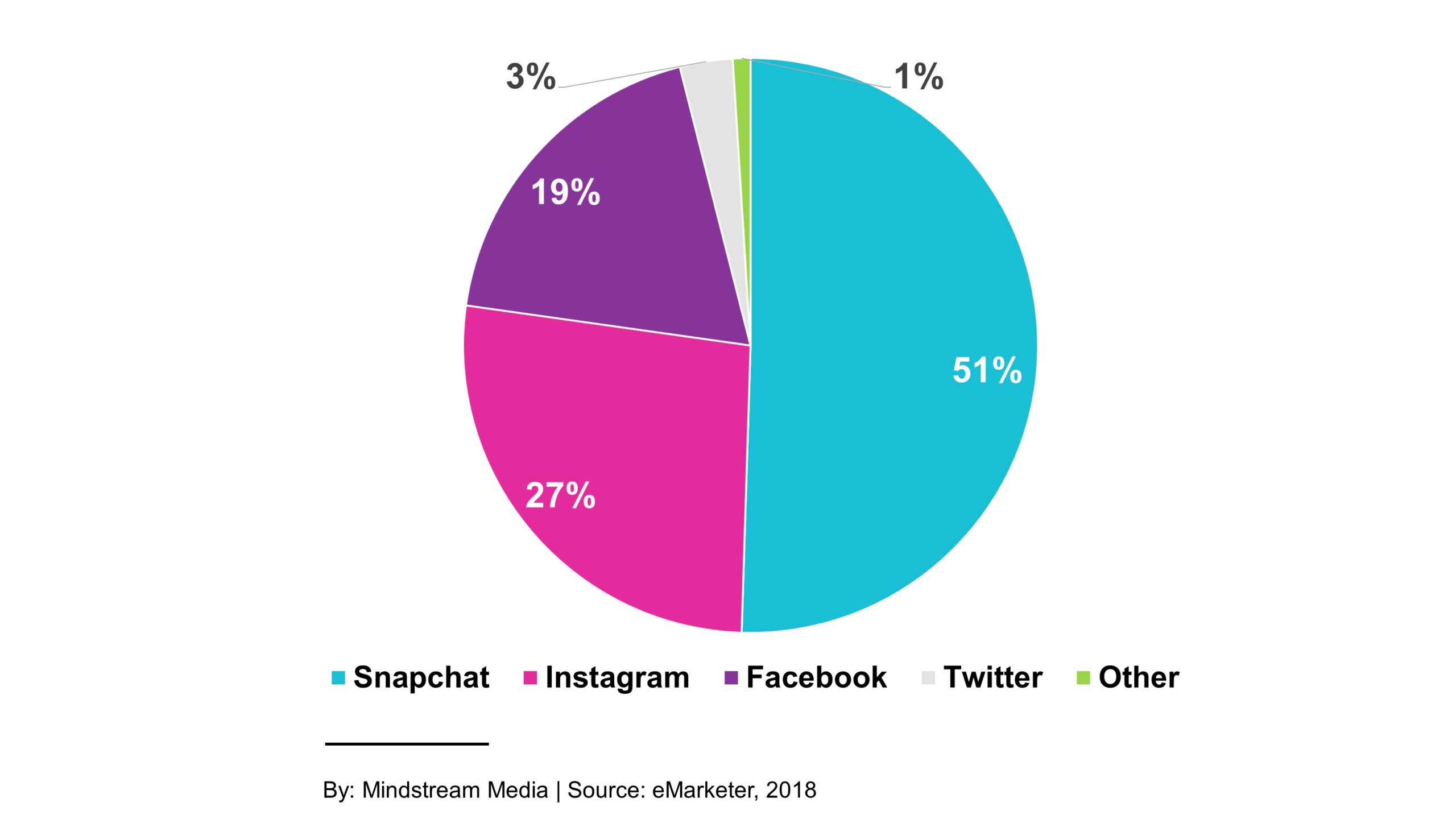Beyond Millennials: How to Market to Generation Z
As a marketer, you’re probably familiar with Baby Boomers and Gen Xers, their common traits and how to reach them. And, it’s difficult to go anywhere without hearing about Millennials and their effect on the marketing industry.
But what about the generation after Millennials, Gen Z – people born from the mid-1990s to 2012? Who are they? What makes them tick? How should brands market to them?
Although it’s difficult to generalize about an entire generation, let’s explore some of the characteristics of this maturing group and how they’re shaping the advertising industry.
Say Hello to Gen Z
Gen Zs, also known as iGens, make up a quarter of the U.S. population and by 2020 will account for 40 percent of all consumers. Gen Z is a powerful consumer force spending a whopping $143 billion a year – and that doesn’t even include the money spent on them by parents or the indirect influence they have over household purchases. With that much buying power, it’s important for marketers to understand their values to successfully engage them.
Generational Composition
(Percent of U.S. Population)

Career-minded

Thanks to the Great Recession of 2008, members of Gen Z grew up in a world that hasn’t always made them feel financially secure. As a result, they are willing to work hard for a well-paying, stable career. With 72 percent of high school students and 64 percent of college students indicating they want to start a business someday, Gen Z is poised to become the most entrepreneurial generation ever. But this desire is more of a survival mechanism to achieve financial stability rather than “Silicon Valley home runs.”
Socially responsible and diverse
Gen Z is the most racially diverse U.S. generation to date and has a more global world-view than previous generations. As a result, they tend to be more tolerant of differences and instead focus on fairness and equality. Gen Z takes this social responsibility to a new level, using their power to effect political change and support causes and the environment. Likewise, they favor brands that facilitate positive change in the world.
Increasingly impatient
As digital natives, electronics that were a luxury to preceding generations are a necessity for modern life for Gen Z. Thanks to smartphones and the internet, they want instant gratification and expect to find the information they seek quickly and easily. You’ve probably heard about the ever-decreasing human attention span (now only 8 seconds). But growing up with a deluge of information has helped Gen Zers develop a sophisticated filter that lets them quickly sort through and assess a tremendous amount of content. As a result, they tend to be visually-inclined and prefer images, memes, GIFs and video over text-heavy content.
Likely to visit brick-and-mortar locations
Although they don’t know a world without the internet, a recent study found that 67 percent of Gen Z shop in a physical store most of the time, and another 31 percent shop in-store sometimes. That’s 98 percent who shop in-store overall. Another study found that 76 percent of Gen Z shoppers believe physical stores provide a better shopping experience than online. Why? The driving factor for going in-store is shopping with friends.
But that doesn’t mean technology isn’t part of the purchase. Before even setting foot in the store, 58 percent check online product reviews and 59 percent compare prices online. While in-store, 47 percent use their smartphones for comparison shopping or sharing with family and friends.
Gen Z doesn’t distinguish between online and offline channels and moves seamlessly between them. To them, the digital world complements and enhances the physical shopping experience. As a result, retailers are constantly pressured to innovate and provide unique, seamless customer experiences across channels to stay relevant.
Among members of Gen Z

Traditional
Other surprising statistics about Gen Z lean traditional as well. An Ad Age report calls Gen Z “part cutting-edge and part traditionalist” with:
- 77 percent reading printed books
- 84 percent paying attention to out-of-home ads in trains, malls, airports and taxis
 Although Gen Z shows traditional tendencies, it’s still difficult for advertisers to engage with them using traditional marketing channels. Gen Z relies heavily on social media and firsthand recommendations and reviews from others to help them decide on new products or experiences. In the same way, they post regularly about brands and products as a form of self-expression, often engaging a brand directly to share their own experiences, whether positive or negative. They also pay close attention to a brand’s response, or lack thereof, and act accordingly. They want to participate in the brand story and know they are being heard, or they’re moving on.
Although Gen Z shows traditional tendencies, it’s still difficult for advertisers to engage with them using traditional marketing channels. Gen Z relies heavily on social media and firsthand recommendations and reviews from others to help them decide on new products or experiences. In the same way, they post regularly about brands and products as a form of self-expression, often engaging a brand directly to share their own experiences, whether positive or negative. They also pay close attention to a brand’s response, or lack thereof, and act accordingly. They want to participate in the brand story and know they are being heard, or they’re moving on.
Bringing it all together: Marketing to Gen Z

Advertising has always been about disruption – i.e., finding ways to cut through the clutter and stand out. But Gen Z views this disruption as not only an invasion of privacy but also a waste of time. They prefer a less intrusive advertising experience (or no ads at all), with 82 percent skipping ads as fast as they can and more than half using ad blockers.
According to Pew Research, 45 percent of teens are online “almost constantly” with smartphones being the device of choice and 75 percent say they receive most of their information on social media. To reach them, it’s critical to implement mobile and social-first strategies on the platforms used most. Gen Z tends to be active on multiple social networks and uses each one for different activities. It’s important to understand how each one is used to create content and ads that resonate.
Which Social Media Platform
Do U.S. Teens Use the Most?

Key takeaways to keep in mind when marketing to Gen Z
- Be transparent. Because they care about the world, Gen Z wants companies to be socially and environmentally responsible. Share your brand’s core values and mission, be transparent in your products and highlight the social good you provide. Transparency also relates to customer data – they want to know what personal information is being collected, how it’s being used and what measures are in place to protect it.
- Be authentic. Gen Z finds celebrities inauthentic and unrelatable. They prefer influencers, real people more like them, that post about products they use and love. A survey by Fullscreen and Shareablee found that 42 percent reported trying a product or service recommended by an influencer, and 26% made a purchase.
- Be inclusive. Ask them to participate and give them a reason to by engaging them with contests and custom content. Encourage collaboration for a social cause or opportunity to influence or earn recognition from their peers. Also, Gen Z will market for you. Provide a fantastic customer experience and they are more likely to broadcast it to their network. Alternatively, if you provide bad service, be prepared for the internet to know about it.
- Be personable. Make it a conversation, rather than one-way communication from your brand to them. Talk with them instead of at them. Be available via the many channels and platforms they are using and respond when they engage you. Tell your brand story and include personal touches like employee photos and community involvement. Remember that they don’t want to be marketed “to.”
- Be engaging. Don’t disrupt their lives. Be entertaining, polite and considerate instead of pushy and intrusive. Visually engaging content marketing efforts can work wonders. Keep it brief and use video, infographics and images to reach them.
- Be unique. Although privacy-conscious when it comes to communication, Gen Z expects brands to collect data on their customer preferences to personalize marketing communications. They want something unique to them rather than a solution for the masses. Tailor your messaging based on their purchase history or give them a photo op to express their creativity.
Bottom line, understanding your target customer, regardless of age, is key to developing a successful personalized marketing campaign. But, inherent generational differences along with changes in technology and shifts in media channel usage can make that even more challenging.
This post was originally published in August 2018 and has been updated with new information.
Want your marketing efforts to reach younger generations? Contact Mindstream Media Group to learn how we can help.
More from Mindstream Media Group

Meet the Mindstreamer – Chandler Swanner
Chandler Swanner’s interest in advertising dates back to her childhood. Her mother (and role model in life) was a Media […]

Third-Party Cookie Phase-Out: What Marketers Need to Know
Cookies are an essential part of internet usage, allowing websites to remember you and provide a more personalized experience. This […]

Meet the Mindstreamer – Kaya Bucarile
She plans and oversees media strategy for agency clients, working closely with project and platform managers to ensure that we […]
